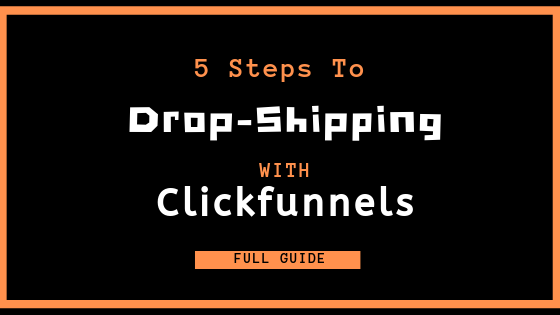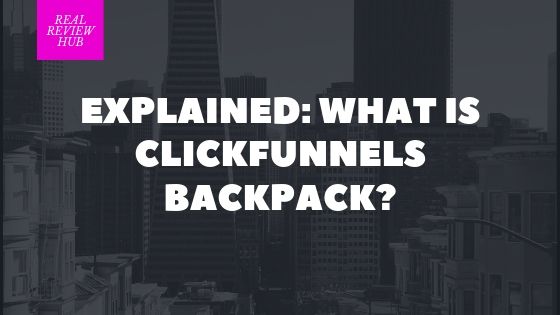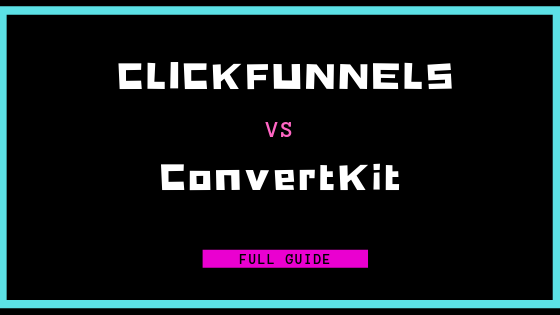5 Steps to Drop-Ship on ClickFunnels
Having a sales and marketing funnel through ClickFunnels automatically improves the chances of your business’s success. However, if you are an eCommerce site, you may also benefit from integrating drop-shipping into your business model.
How do you drop-ship with ClickFunnels? To successfully start drop-shipping with ClickFunnels, follow these five steps:
- Build Out Your Online Store
- Find a Drop-ship Supplier
- Upload Your Products
- Start Marketing Your Products
- Optimize Your Site
Drop-shipping offers a lot of benefits in collaboration with a well-built sales funnel from ClickFunnels, but is this eCommerce method right for your business? To find out, you must first understand what drop-shipping is and what it can do to help your organization.
What is Drop-Shipping?
Drop-shipping is a common tool among eCommerce sites and is a “retail fulfillment method where the online store buys an item from a third party whenever they sell a product. That third party then ships the product to the customer.” (Source: ClickFunnels)
In other words, with drop-shipping, you can partner with a supplier to sell their products in your store. In turn, the supplier fulfills the order and then ships it directly to the customer as if it as coming from you.
For example, if a customer buys a product from your website at $25, you would forward that order to your chosen drop-shipping partner to fulfill on your behalf at the wholesale cost of $15. As a result, your drop-shipping partner receives $15 in revenue from packing and shipping the order that came through your website, while you receive $10 for being a medium for which that order could take place.
Benefits of Drop-Shipping
Both eCommerce sites and their third-party providers mutually benefit from this exchange. Third-parties can take advantage of the marketing opportunities eCommerce sites offer for their products, while eCommerce sites can make quick money selling products without having to worry about the costs of storage and shipping. However, that is not where all the benefits stop!
Ideal for Startups and Small Businesses
Drop-shipping is a useful tool for both brand new eCommerce sites or small businesses because it can help you save a lot of money in the early stages.
Lower Costs
As mentioned before, you can avoid the costs of maintaining a warehouse or storage unit, in addition to the costs associated with sending out shipments. You also do not have to keep track of inventory or pay for labor costs behind order fulfillment and shipping.
Reduced Capital
Because you save a good amount of money with drop-shipping, you will not require a lot of capital when first launching your business. You will not have to buy an excessive number of products to stock your store, because your supplier will keep track of their inventory, and will only be fulfilling orders as they come in.
More Flexibility
Drop-shipping allows you to have more flexibility in how your business can operate. Since you are relieved of having to store and ship your products yourself, you can run your business from almost anywhere that has an internet connection. This is perfect for startups that prefer to begin and continue their operations from home.
Easy to Scale
If you start off selling one product through drop-shipping, it is quite easy to expand your line over time. Simply request and add more products from your supplier to fulfill!
More Product Variety
With drop-shipping, you can sell a wider variety of products from different third-parties. Take Amazon, for example. You can almost purchase anything from Amazon now, and often those products are available from multiple third-parties—not necessarily just Amazon.
In addition, with more product variety you are less likely to run out of stock on products—as long as your drop-ship partner has them available, you can continue to offer them on your website.
Room for Risk-Free Testing
If you are not sure which products will sell best, drop-shipping allows you to sell a variety of items to test them out. Your supplier will fulfill orders from their own warehouse, so you do not have to worry about any extra costs for offering more products. You will only pay the wholesale price for the items that do sell, and even then, you will still make a profit!
Increase in Sales
You can also increase sales with drop-shipping! Having a more extensive selection of products allows you to cross-sell and upsell much more easily. You can bundle or suggest the bundling of select items to promote more sales and have more satisfied customers.
Become an Asset
Once you have established a successful eCommerce site, you can really start to create value for your business. Eventually, with enough growth, you will be able to sell your business for profit. For example, an online store that brings in nearly $1,000 each month in net profits can easily be sold for $20,000!
Drop-Shipping & ClickFunnels
ClickFunnels is an online sales and marketing funnel builder that helps a variety of businesses market and sell their products and services online. With ClickFunnels, you can create landing pages and a sales and marketing funnel unique to your business and industry. This is especially useful for eCommerce owners who are interested in offering discounted products or exclusive sales for their items.
A sales and marketing funnel, plus a drop-ship system, can set up your eCommerce business for success! Your sales and marketing funnel will help direct potential customers to your website to eventually purchase your products and push them towards other related products, while your drop-ship system will ensure they can receive their orders in a timely manner for higher customer satisfaction, and a higher returning customer rate.
5 Steps to Drop-Ship on ClickFunnels
ClickFunnels gives users the ability to easily use drop-shipping for their eCommerce site with a drop-shipping partner. If you are new to eCommerce or want to optimize your current eCommerce site with drop-ship options, it only takes a few, easy steps:
1. Build Out Your Online Store
First, you will need to update or create an eCommerce website that can support the products you want to sell. Having a website already set up will make you look that much more legitimate when you approach potential drop-ship suppliers later!
There are a few elements you should consider when building out your online store:
Choosing a Domain Name
What you choose to be your domain name is very critical, especially if you plan on eventually growing a brand. Pick a name that you know you will be happy with working within the long-term, and will be less likely to want to change later. Some other tips to choosing your domain name include the following:
- If you are stuck on choosing a name for your store or domain, try using a business name generator to spark ideas.
- If you want to specify your niche in your domain, pick a broad term that encompasses it. For example, even if you are only selling rings now, use a keyword like “jewelry” in your domain in case you decide you want to diversify and sell rings and necklaces too. This will reduce the hassle of buying a new domain and transferring it later.
- Avoid using your own name for your store; if you ever decide to sell your eCommerce store to someone else, they would end up having the rights to use your name for their own business purposes.
Building Your Website
After you have picked a domain name and named your online store, create your website! It is highly recommended that you either use Shopify or WordPress to build your site; however, the platform you will want to use will depend on your business goals.
Shopify
Shopify is one of the most popular eCommerce platforms on the market and offers a variety of features that helps business owners sell products online. Better yet, it is compatible with ClickFunnels and supports drop-shipping, too.
If you are trying to set up a basic online store without too much regular content, then Shopify may be the way to go for you.
WordPress
WordPress is more associated with being a blogging platform, but it is entirely capable of supporting eCommerce sites as well. You can download a plugin called WooCommerce that will allow you to convert your blog into an eCommerce store.
WordPress is ideal for people who want to set up an online store alongside a variety of types of content, such as videos, articles, and more.
Integrating Your Website with ClickFunnels
After creating your website, you will want to integrate it with ClickFunnels next. Simply navigate to the “Integrations” tab on your ClickFunnels dashboard while logged into your Shopify or WordPress site in another tab.
Next, click on “Add New Integration,” where you will be able to search for and select either “Shopify” or “WordPress,” depending on the type of site you chose to build. Then, fill out the name of the website and your store’s URL. Follow the remaining steps provided through ClickFunnels to complete the process. You can read our complete guide to integrating WordPress with Clickfunnels.
If you have not already created a sales and marketing funnel through ClickFunnels, now would be the best time to do so. Make sure you pick a funnel template that is best suited for eCommerce and the type of products you plan to sell.
Once you have your domain and website set up, you will next need to find a drop-ship supplier for your online store.
2. Find a Drop-Ship Supplier
Before you can even begin using the drop-ship method, you will need to find a supplier that offers the types of products you want to sell. But where do you even start? How do you find a reputable supplier?
Drop-Shipper Marketplaces
There are a few major drop-shipper marketplaces that are well-known among eCommerce owners, including Alibaba and SaleHoo. These providers actually have access to a wide variety of third-party suppliers that have been screened through their system, so it is a great starting point for anyone new to eCommerce that is looking for a supplier. Below are some of the most popular drop-shipping suppliers and marketplaces to check out:
- Alibaba
- AliExpress
- Doba
- Dropshipper.com
- Drop-ship Direct
- InventorySource
- MegaGoods
- National Dropshippers
- SaleHoo
- Wholesale2B
- Wholesale Central
- Worldwide Brands
Niche Drop-ship Companies
However, if you plan on selling more niche-based products, you may also want to consider looking into smaller drop-shipper companies. You can often find them on drop-shipper websites or directories. These directories usually list suppliers by their industry and types of products they sell, ratings, and more.
Because niche drop-ship suppliers are often much smaller and not as well-known, it is important that you do plenty of research before making a decision. Once you do find a few supplier candidates, make sure you contact each one to determine if they are in fact the best option for your eCommerce needs. Some common questions you may want to ask to help narrow down your pool of candidates include:
- Can they handle drop-shipping? How much experience do they have in it?
- What are their minimum order quantities?
- What are their shipping options and times? Do they meet 24-hour shipping deadlines like Amazon and other big marketplaces, or do they take longer to fulfill orders?
- Is tracking number retrieval automated, or will you need to contact them for each tracking number they produce manually?
- Will they be able to provide you with updated inventory lists or a feed that automatically updates as orders are sent out?
- Do they have enough inventory? Do they stay well-stocked at all times?
- Are they organized? If they have an inventory feed, is it broken down into categories? Are their products listed correctly?
- Will they provide high-quality images of their products for you to use on your website?
- Do they have an IT team that can assist you with any problems encountered while setting up products on your site?
- Do they offer reasonable prices so you can stay competitive in the market? Are they cost-effective?
- Do they enforce Minimum Advertised Price (MAP) policies?
- How does the order placement process work? Is it automated or manual?
- Is there a fee for using their services? How much is it?
By asking these questions, you should have a better idea of what kind of supplier will work best for your business.
If you still find it difficult to make a decision on a supplier, try placing a sample order with each of your final options, and compare the results. Consider the delivery time, as well as the product and packaging quality. It is important that you keep your customers in mind and what they will ultimately expect from you when they place their order.
3. Upload Your Products
After you have chosen a supplier, it will be time to open an account with them and get a list of their products to add to your site. It may be best to list a large variety of products within what you want to sell as a brand and then narrow down your product list once you have a better idea of what sells the most.
4. Start Marketing Your Products
You have your website and your products—now it is time to really sell! Start generating traffic to your online store through a variety of marketing efforts, from search engine optimization (SEO) to pay-per-click (PPC) and retargeting ads. Even social media or Facebook and Instagram ads can be used to promote your products and your store.*
If you have ClickFunnels integrated into your eCommerce site, that’s even better! Having a sales funnel established will make it much easier for you to guide traffic to your site.
*Note: Remember that starting out, you are testing out which products will produce the most sales, so it is okay if your marketing efforts fall flat the first few weeks. Keep experimenting with different types of ads for different products to get valid reports to look back on, and work your way up from there.
5. Optimize Your Site
Now that your business is up and running, take some time to review regular reports. They will tell you what your online traffic looks like, which products are selling well, and how effective your marketing efforts are. You will also begin to get a sense of who your target audience is if you were not sure before. From there, adjust your marketing strategy or your product offerings to reflect what your customer base is looking for.
Drop-shipping can quickly become a viable and profitable business model if you operate your online store efficiently and effectively. Startups and small businesses find the most benefit from drop-shipping, but even medium-sized and large companies can take advantage of this proven business model.
If you are interested in reaping the benefits of drop-shipping for your business, and already have an existing sales and marketing funnel from ClickFunnels, follow the above steps to ensure a smooth and successful integration process.





